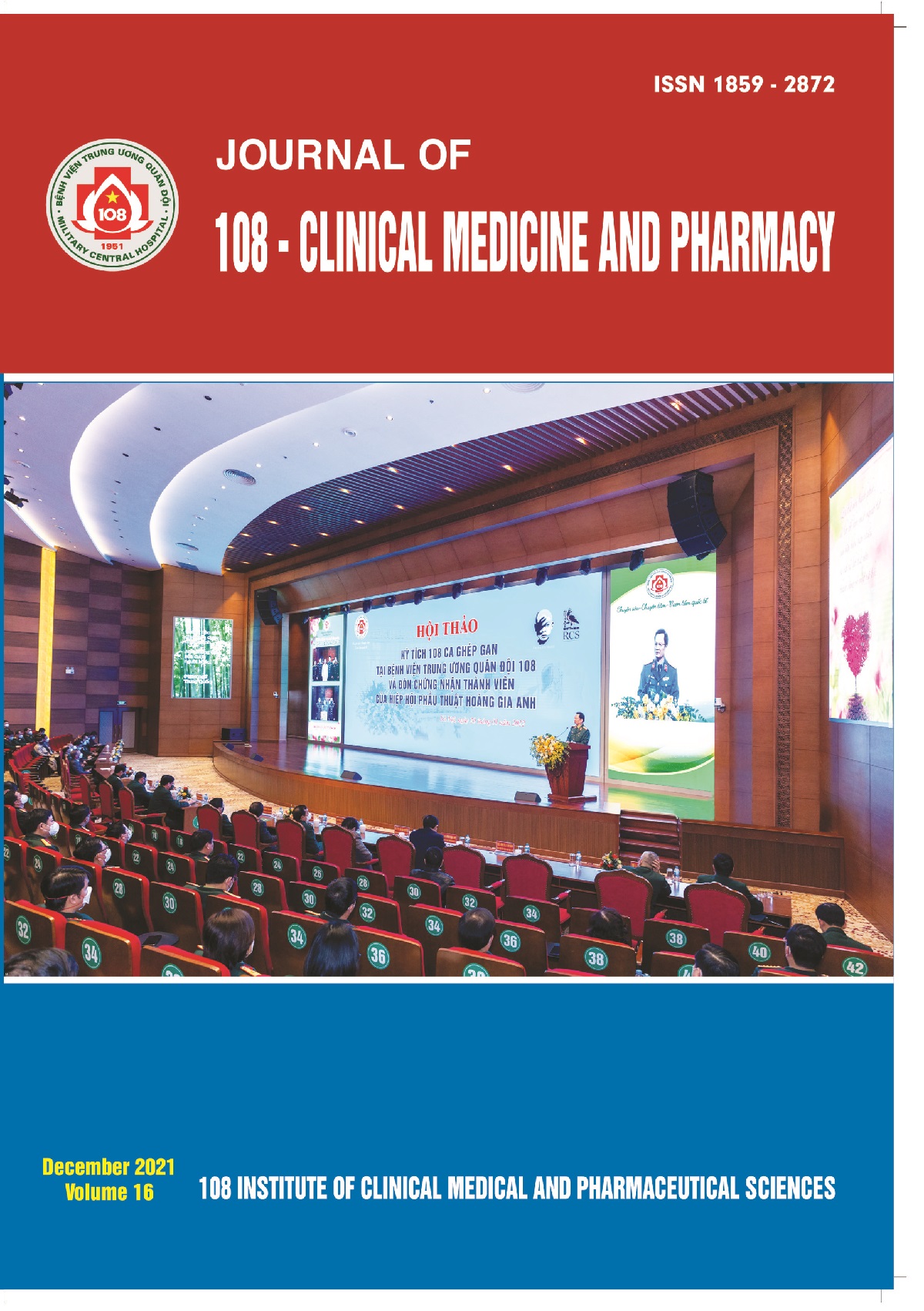Five-year outcomes of endovascular aortic repair at 108 Military Central Hospital
Main Article Content
Keywords
Tóm tắt
Objective: To evaluate the results of endovascular surgery to treat aortic disease at 108 Military Central Hospital. Subject and method: We conducted a prospective descriptive study of 69 patients undergoing stent graft at 108 Military Central Hospital from 12/2016 to 03/2021. Result: Endpoints: Technical success rate 100% (n = 69); Survival: n = 65 (94.2%); Target vessel patency: n = 67 (97.1%); Re-intervention n = 0 (0%); 30-day in-hospital mortality: n = 3 (4.3%), Endoleak: n = 2 (2.8%), spinal cord ischemia: n = 2 (2.8%), Stroke: n = 2 (2.8%), Infection: n = 1 (1.4%). Conclusion: Endovascular repair to treat aortic disease is a safe and highly effective method. The procedure should be considered in the Hybrid operation room and performed by cardiovascular surgeon- interventional cardiologist.
Article Details
Các tài liệu tham khảo
2. Li F, Wu X, Yuan J et al (2018) Comparison of thoracic endovascular aortic repair, open surgery and best medical treatment for type B aortic dissection: A meta-analysis. International Journal of Cardiology 250: 240-246.
3. Czemy M, Pacini D, Aboyans A et al (2021) Current options and recommendations for the use of thoracic endovascular aortic repair in acute and chronic thoracic aortic disease: an expert consensus document of the European Society for Cardiology (ESC) Working Group of Cardiovascular Surgery, the ESC Working Group on Aorta and Peripheral Vascular Diseases, the European Association of Percutaneous Cardiovascular Interventions (EAPCI) of the ESC and the European Association for Cardio-Thoracic Surgery (EACTS). Eur J Cardiothorac Surg 59(1): 65-73. doi: 10.1093/ejcts/ezaa268.
4. Raimund E, Victor A, Catherine B et al (2014) ESC Guidelines on the diagnosis and treatment of aortic diseases. European Heart Journal 35: 2873–2926.
5. Iden A, Gustavo L, Shanka B et al (2019) Hybrid aortic arch debranching and tevar is safe in a private, community hospital. Ann Vasc Surg 57: 41-47.
6. Hu Z, Li Y, Peng R et al (2016) Multibranched stent-Grafts for the treatment of thoracoabdominal aortic aneurysms: A systematic review and meta-analysis. Journal of Endovascular Therapy 23(4): 626-633.
7. Ranney D, Morgan L, Babatunde A et al (2017) Long-term results of endovascular repair for descending thoracic aortic aneurysms. J Vasc Surg 67: 1-6.
8. Swerdlow NJ, Lyden SP, Verhagen HJM et al (2020) Five-year results of endovascular abdominal aortic aneurysm repair with the Ovation abdominal stent graft. J Vasc Surg 71(5): 1528-1537.
 ISSN: 1859 - 2872
ISSN: 1859 - 2872
